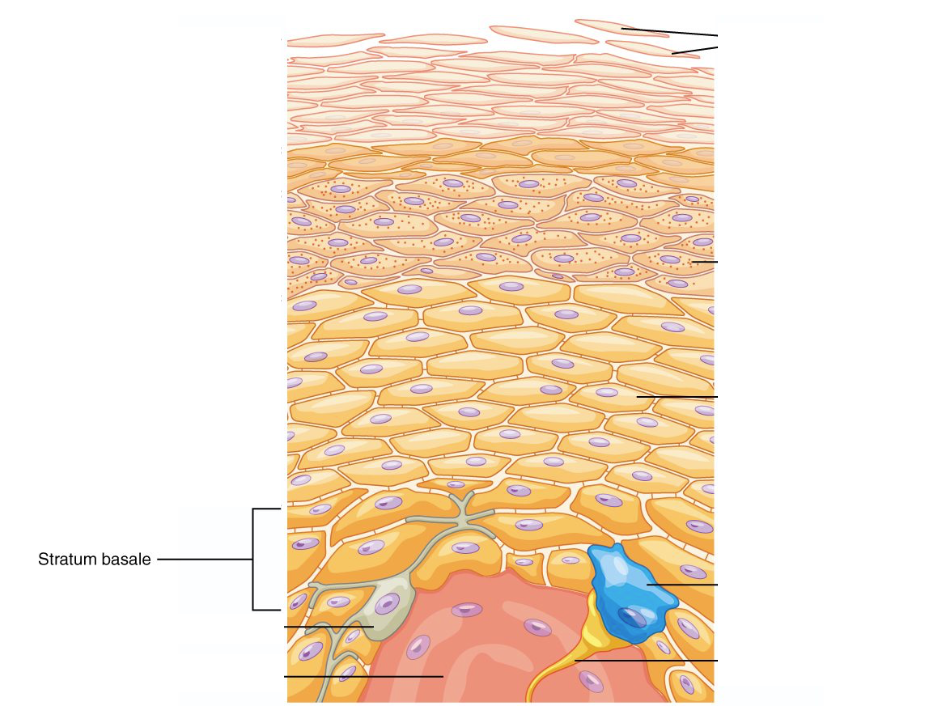The Integumentary System
1/9
Earn XP
Description and Tags
HESI A2
Name | Mastery | Learn | Test | Matching | Spaced |
|---|
No study sessions yet.
10 Terms
Epidermis
Protecting the body from the outside as the outermost layer, keeping your skin hydrated, producing new skin cells, and determining your skin color.
The epidermis consists of stratified squamous epithelium arranged in layers or strata. The layers are:
Stratum corneum
Stratum lucidum
Stratum granulosum
Stratum spinosum
Stratum basale
Come Lets Get Sun Burned
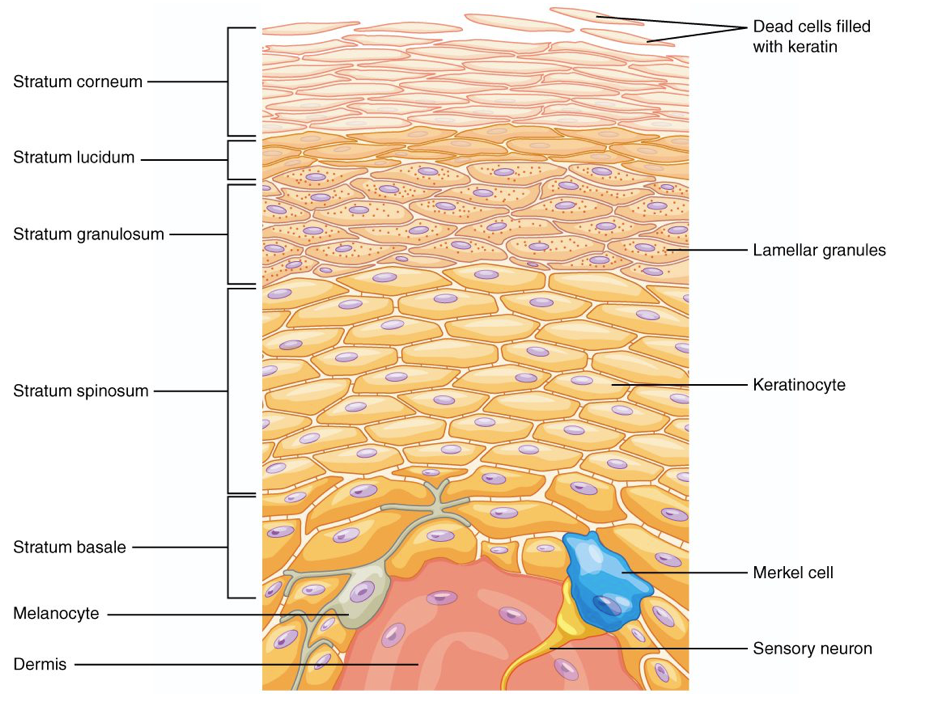
Dermis
The middle layer of skin, contains collagen, blood vessels, glands, hair follicles, and nerve endings support and protect the skin and deeper layers, assist in thermoregulation, and aid in sensation.
The dermis contains a variety of accessory structures of the integument. These include:
Hair follicles
Arrector pili muscles
Sweat glands
Sebaceous glands
Sensory receptors
Blood vessels
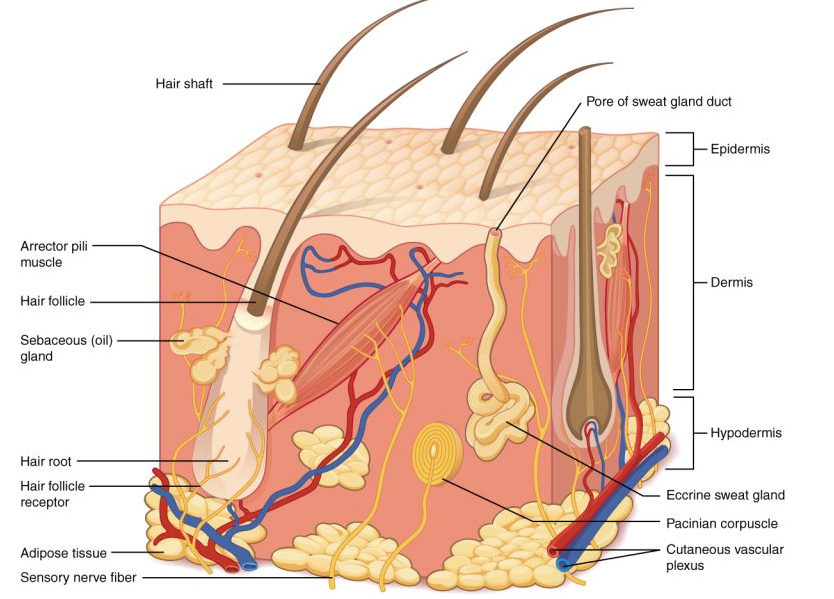
Hypodermis (subcutaneous)
The innermost layer of skin, storing energy, connecting the dermis layer of your skin to your muscles and bones, insulating your body, and protecting your body from harm.
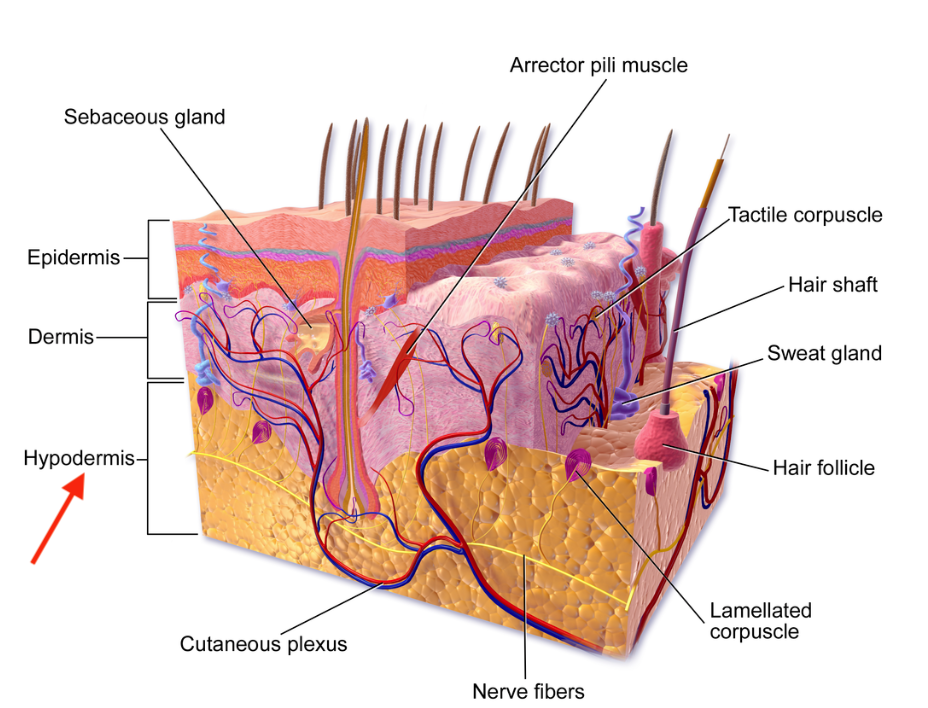
Dermal papillae
Regulate hair growth, protrusions of dermal connective tissue into the epidermal layer.
Melanocytes
Produce and distribute melanin, which is a skin pigment.
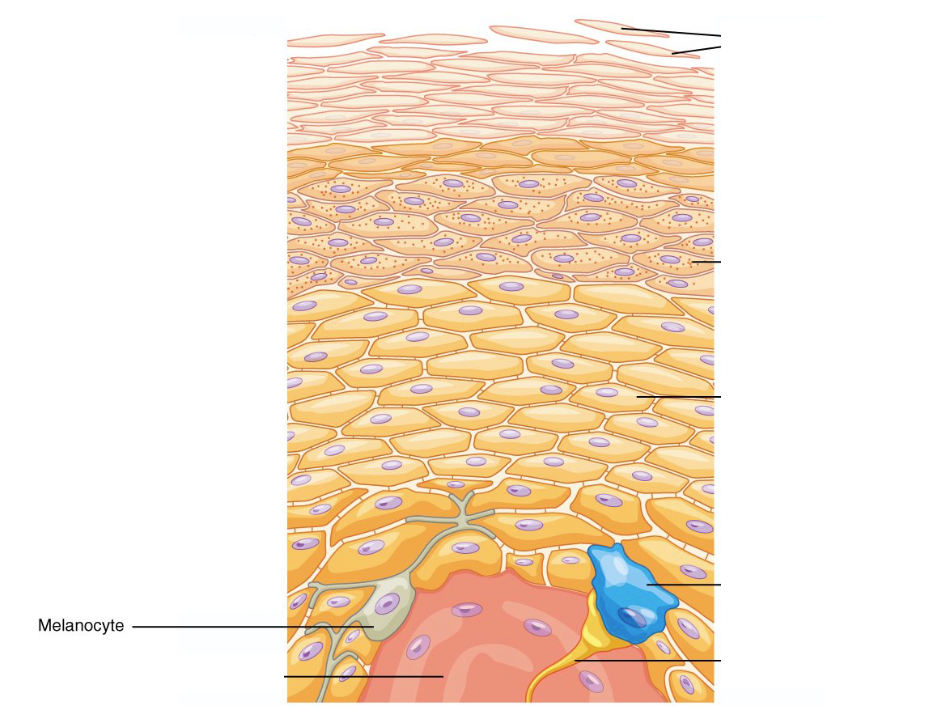
Stratum corneum
First line of defense against the environment.
The most superficial layer of the epidermis.
It consists of cells that have been hardened with keratin.
Keratin is secreted by cells located in the deep layers of the epidermis called keratinocytes.
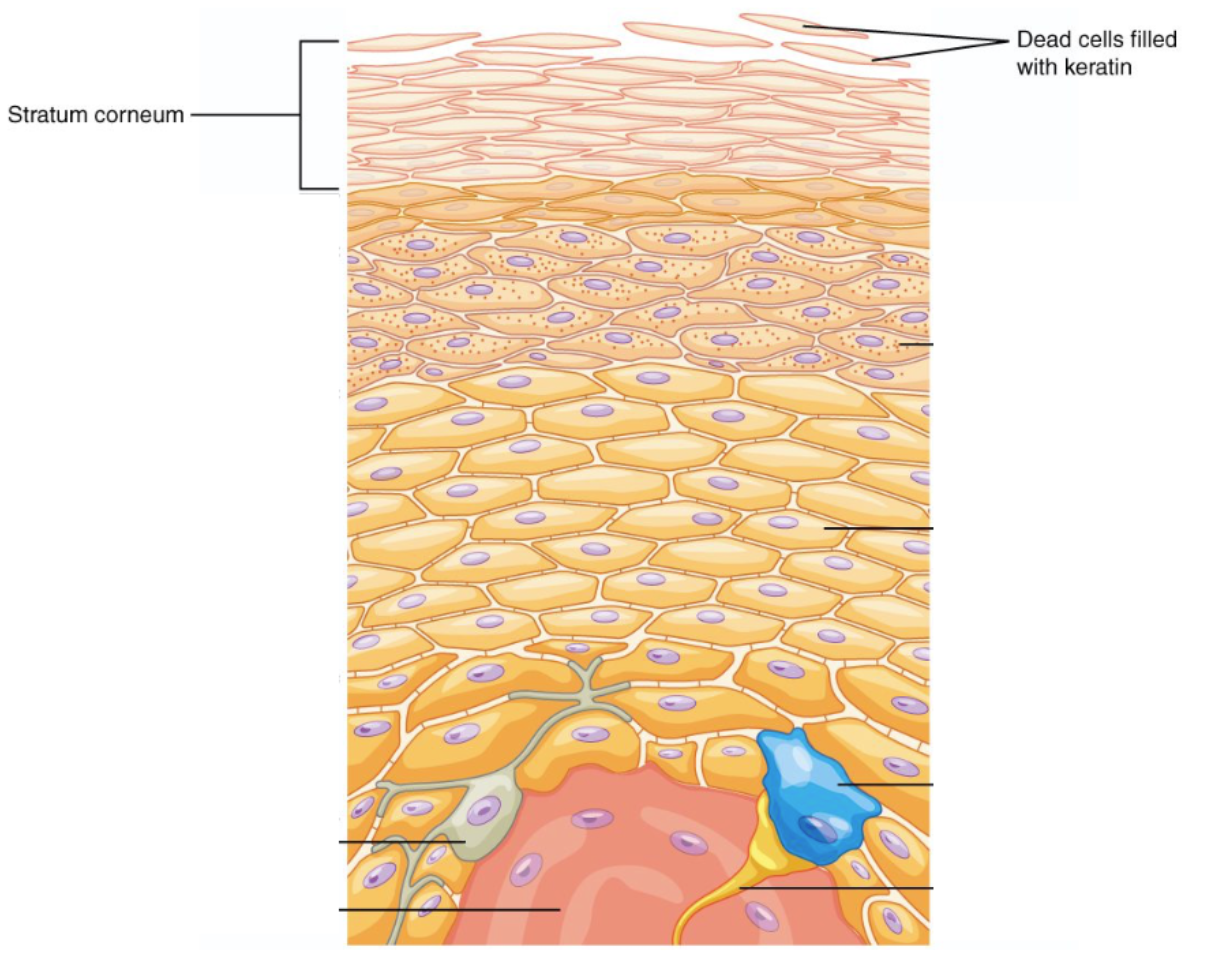
Stratum lucidum
Thin somewhat translucent layer of cells lying superficial to the stratum granulosum and under the stratum corneum, found especially in thickened parts of the epidermis (as of the palms or the soles of the feet).
This layer provides an additional barrier of protection in areas subjected to fiction.
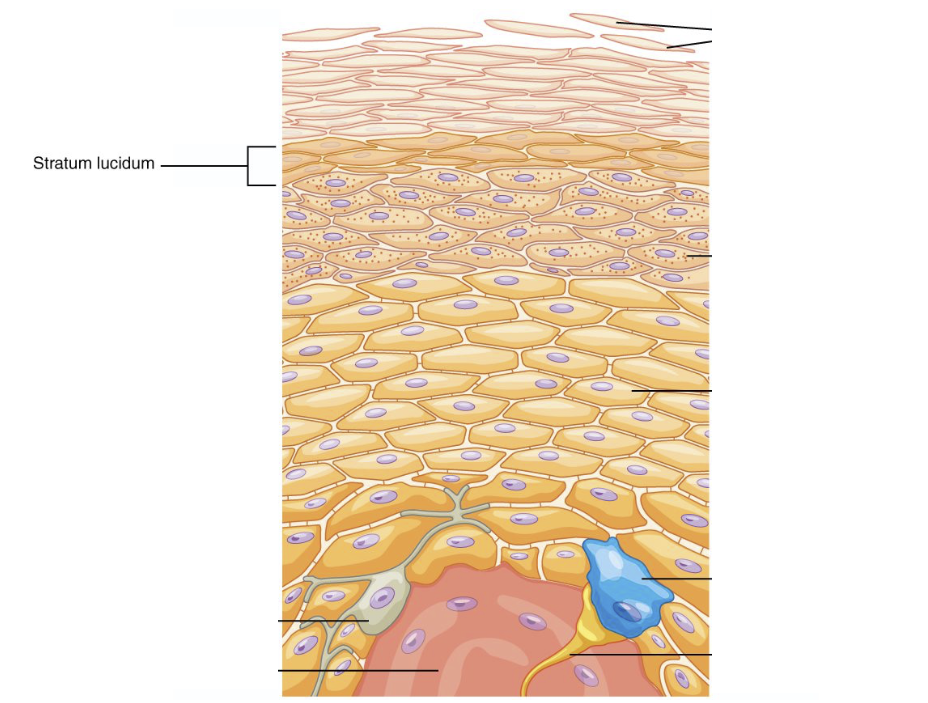
Stratum granulosum
Accumulate dense basophilic keratohyalin granules that contain lipids helping to form a waterproof barrier which prevents fluid loss from the body.
Contains cells that have lost their nuclei. These cells remain active and secrete keratin. The cells contain granules in their cytoplasm that harbor keratin.
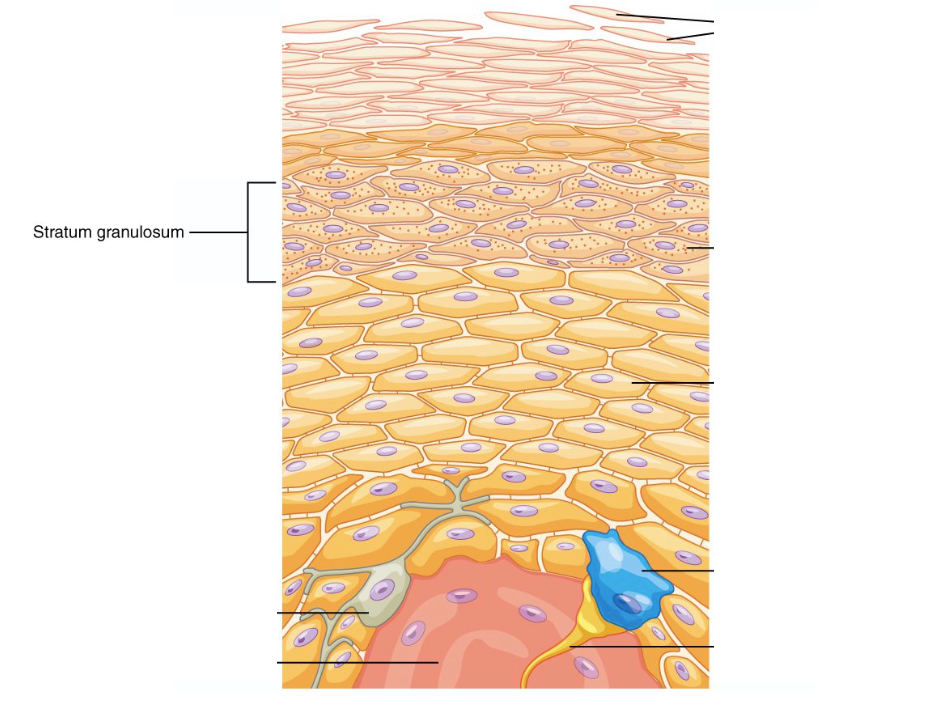
Stratum spinosum
This layer mostly consists of keratinocytes held together by sticky proteins called desmosomes, helping make your skin flexible and strong.
Contains cells called prickle cells. These cells have small radiating processes that connect with other cells. Keratin is synthesized in this layer.
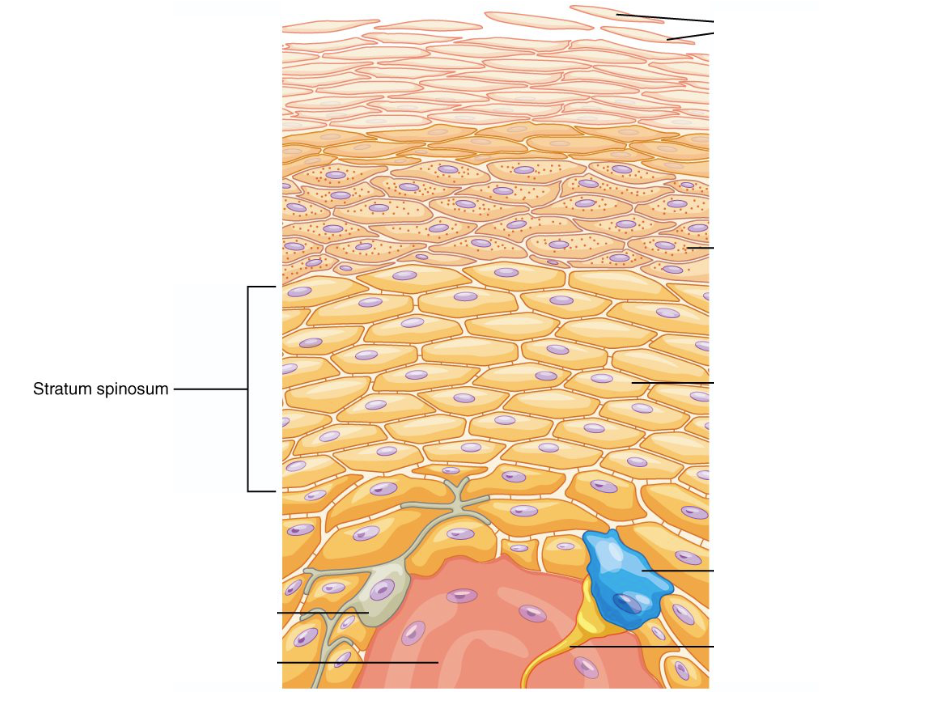
Stratum basale (basal cell layer)
Deepest of the five layers of the epidermis, contains the only layer where the proliferation of skin cells can occur and attaches epidermis to the dermis.
Contains epidermal stem cells. This is the deepest layer of the epidermis. It consists of one layer of cells that divide and begin their migration to the superficial layers. This is the layer where basal cell cancer develops.
The stratum basale also contains Langerhan cells, melanocyte and merkel cells.
